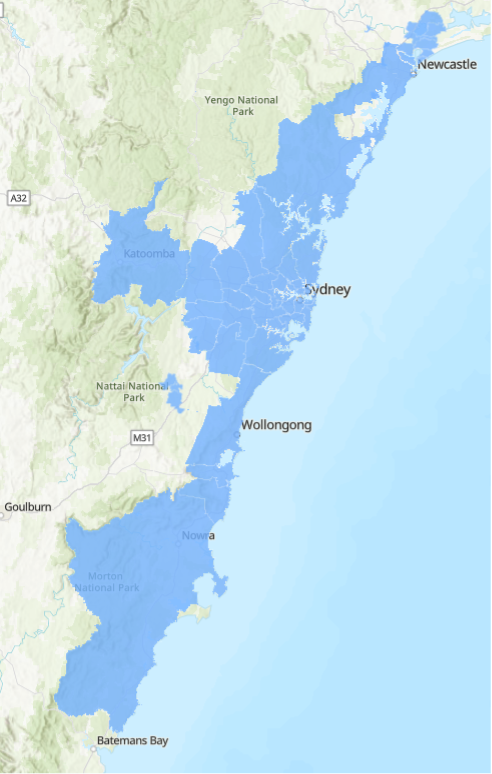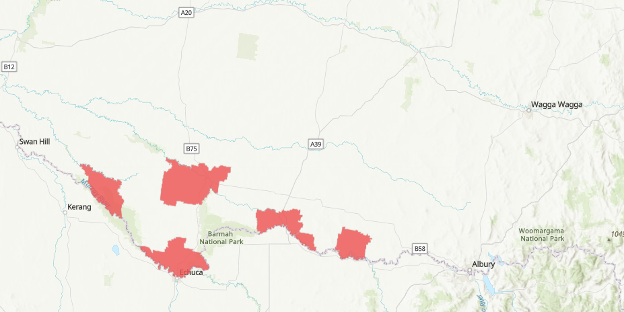Background
Historically, taxi drivers could not accept a hiring which commenced at a taxi rank or was hailed in the street (rank or hail trips) that began outside the taxi’s area of operation. From 1 August 2023, geographical restrictions (boundaries) will no longer apply and all NSW taxis, which are licenced and meet relevant safety standards, will be able to provide taxi services anywhere in NSW.
Operators of a taxi service and drivers should be aware that:
• Taxi fares and charges in NSW differ depending on where the trip started. Taxis must apply the correct fare in accordance with the NSW Fares Order, to the trip. The fare calculation device (meter) must be used for all rank and hail trips and display the correct fare.
• Additional safety requirements apply for taxis providing rank and hail and booked passenger services in Sydney, Newcastle, Wollongong and Central Coast including duress alarms and vehicle tracking devices.
• Taxis providing rank and hail services must be fitted with an approved security camera system and signage inside and outside of the taxi advising passengers that they are under video surveillance while in or near the taxi.
Further information on security camera system requirements is available here.
Using the correct fare
Drivers must use the meter for all rank and hail trips, ensuring the correct fare is used for the location of the journey. Passengers must be charged in accordance with the NSW Fares Order for the area in which the journey started.
For example, if the taxi service commenced just inside an urban area, such as Wollongong, but most of the journey was outside of that urban area, the urban area fare would still be charged, as this is where the journey commenced.
The following map indicates where urban areas are located throughout NSW:
The following map indicates where exempt areas are located throughout NSW:
Duress alarms
Taxis providing rank and hail taxi passenger services in Sydney, Newcastle, Wollongong and Central Coast must have a working duress alarm system. The duress alarm system must be compliant with TfNSW guidelines.
Vehicle tracking devices
Taxis in Sydney, Newcastle, Wollongong and Central Coast, that provide rank and hail taxi passenger services, must have a working and approved vehicle tracking device. The vehicle tracking system must be compliant with TfNSW guidelines. Please go to our website for more information on safety standards for taxis.
Frequently Asked Questions
Do any geographical operating area restrictions apply to NSW taxi licences? No. Historical geographical operating area restrictions no longer apply, and all taxis registered in NSW will be able to provide passenger services anywhere in NSW.
Additional security features
I typically operate in Bowral but want to provide passenger services in Wollongong now there are no geographical operating area restrictions. Do I need any extra equipment?
In addition to your usual safety obligations, if you intend on providing rank and hail passenger services in Sydney, Newcastle, Wollongong or the Central Coast, you will need to arrange the fitting of and you must use a duress alarm system and a vehicle tracking device when providing taxi services in these areas.
Do I need to fit any additional safety or security equipment to my taxi if I only plan to offer taxi passenger services outside of the specified areas?
No. Duress alarms and tracking devices are not required if you do not offer rank and hail passenger services in Sydney, Newcastle, Wollongong or the Central Coast. Please note that all taxis providing rank and hail services throughout NSW must be fitted with an approved security camera system and signage.
If I live in Sydney, Newcastle, Wollongong or Central Coast but only provide rank and hail passenger services outside of these areas, do I need the additional safety and security equipment?
The additional safety and security equipment (duress alarm system and vehicle tracking system) is only required if rank and hail passenger services are provided in the specified areas. Taxis are allowed to drive through these areas, without the stipulated additional safety and security systems when not hired. For example, when returning home at the end of a shift.
I have a TC plated taxi, can I provide passenger services anywhere, including metro areas? Does my vehicle insurance change?
T plated and TC plated taxis are now able to provide taxi passenger services anywhere in NSW. The prefix T and TC simply indicates the address at which the taxi vehicle is known to be garaged. This means TC plated vehicles can provide services in metro areas and T plated vehicles can provide services in country and regional areas. Depending on your CTP Greenslip insurer, insurance will still be based on where the vehicle is garaged.
Where can I get the extra equipment from?
If you are affiliated with an authorised service provider (part of a network), the taxi service provider is responsible for the installation of all safety and security equipment required by point to point transport law. The driver is responsible for using and checking that they are in working order during their pre-departure checks.
Fares, charges and meter use throughout NSW
Where do I find information on the NSW Fare Order and taxi fare charges in urban and country areas?
Information regarding urban and country locations and charges can be found at Transport info.
The Taxi licence holder, Taxi Service Providers, facilitators and affiliated providers are responsible for making sure that taxi meters are capable of accurately calculating fares and that the meter can be calibrated so that it determines the correct fare for the journey. Drivers must ensure they are using the meter during a rank or hail trip and are charging the correct fares and charges.
Can I still charge more than the regulated fare for out of area trips, for example, if I accepted a hail journey that started in Kiama but finished in Wollongong?
No. Areas of operation and out of area trips no longer exist. For a rank or hail trip, the passenger must be charged according to where the journey started and according to the NSW Fares Order – a different fare or additional charges cannot be applied or negotiated.
Further education
Related resources are available from the Learning Centre and the following links:
• Becoming a taxi licence holder
• Transport Act and Regulation
If you have any questions or need further information, please visit the Point to Point Transport Commissioner’s website pointtopoint.nsw.gov.au or call the Industry Contact Centre on 131 727.

